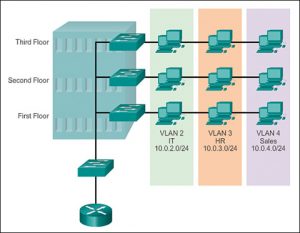Introduction:
This assignment aims to enhance the understanding of the importance of definitions in technical writing. The hands-on practice provides an opportunity to comprehend the role that definitions play in effectively communicating information to a specific audience. Moreover, it emphasizes the significance of tailoring the purpose of a piece of writing to the audience context, which requires the writer to understand different levels of detail and select the appropriate level accordingly. This assignment aims to improve the ability to communicate technical information effectively in various contexts. The hands-on practice involves three parts: writing a definition, peer review, and reflection. The definition segment requires selecting a complex term related to the profession and composing a parenthetical, sentence, and expanded definition of the term. The expanded definition must use at least four expansion strategies, include one visual, and cite at least three outside sources. The peer review involves providing constructive criticism to a team member, and the reflection encourages the consideration of feedback to revise the work.
Reading Situation:
My hypothetical reading situation assumes that I have been hired as a network administrator. In this role I would be hired to create a VLAN for a large office with multiple departments. The employees have varying levels of technical knowledge, so I would need to explain the concept of a VLAN in a simple way to supervisors and managers.
Parenthetical Definition:
A VLAN (Virtual Local Area Network) is a network that operates within a single physical LAN (local area network). In the context of an office a LAN will be all the connections between the devices in your workplace. A VLAN logically separates network traffic through strategic configuration (AL-Khaffaf 288).
Sentence Definition:
A Virtual Local Area Network (VLAN) is a technology that enables the creation of multiple networks within your workplace. This allows administrators to logically group devices and separate network traffic, improving network security and reducing broadcast traffic.
Expanded Definition:
What is a VLAN?
A Virtual Local Area Network (VLAN) is a technology that allows the creation of multiple isolated networks on a single network. For instance, a network refers to all the connections between the devices in an office space. Through a VLAN, data is divided into separate groups, with each group assigned to a distinct VLAN. Data can range from emails to presentations shared among colleagues. A VLAN helps limit network traffic, enhance network security, and better manage network resources.
How does it work?
In a VLAN, each network segment is isolated from each other and operates separately. For example all Accountants at a company might connect their devices to the same network segment. This is done by assigning a unique identifier, called a VLAN ID, to each segment. Data in a certain network segment is then assigned a VLAN ID and is forwarded through that VLAN accordingly.
How is it used?
VLANs are widely used in organizations to create different network segments for various departments, improve network security, and manage network segments. Network segments are groups created for different departments or groups of employees to connect. This enhances security because network segments are difficult to access without the appropriate certification on a device (Leischner, Garrett, and Tews). For example, an accountant may need to work on, send, and receive sensitive information on their work laptop, and doing so within the accounting network segment ensures that a disgruntled employee in sales cannot access this information despite being within the company network as a whole. Additionally, resources are improved because each network segment enables faster transmission of information to its destination. For example, the accounting information sent to and from the accountant could travel faster because there is less traffic in the accounting network segment compared to the company network as a whole.
Is there a risk in using VLAN?
VLANs can improve network security by isolating different departments making it harder for unauthorized devices to access company information, but VLAN configurations can also introduce security risks if not created properly. For example, switches are devices used to create VLANs that aren’t used otherwise. If an entity that wished harm to the company were able to access a switch remotely through hacking it could compromise network security (Leischner, Garrett, and Cody Tews). VLANs should be installed and implemented by an experienced network administrator to avoid these risks.

(Cisco Press) Explanation: Each VLAN is represented by a different colour
Works Cited:
Al-Khaffaf, Dhurgham Abdulridha Jawad. “Improving LAN Performance Based on IEEE802.1Q VLAN Switching Techniques.” Journal of University of Babylon for Engineering Sciences 26.1 (2018): 286-297.
“Cisco Press.” VLAN Segmentation (3.1) > Cisco Networking Academy Switched Networks Companion Guide: VLANs. Cisco Press, 25 June 2014, https://www.ciscopress.com/articles/article.asp?p=2208697&seqNum=4.
Leischner, Garrett, and Cody Tews. “Security through VLAN segmentation: Isolating and securing critical assets without loss of usability.” proceedings of the 9th Annual Western Power Delivery and Automation Conference, Spokane, WA. 2007.
First draft:
https://blogs.ubc.ca/engl30199c2022w2/2023/02/06/three-definitions-of-vlan/
Tanya’s peer review:
https://blogs.ubc.ca/engl30199c2022w2/2023/02/13/peer-review-vlan-definitions/
Leave a Reply